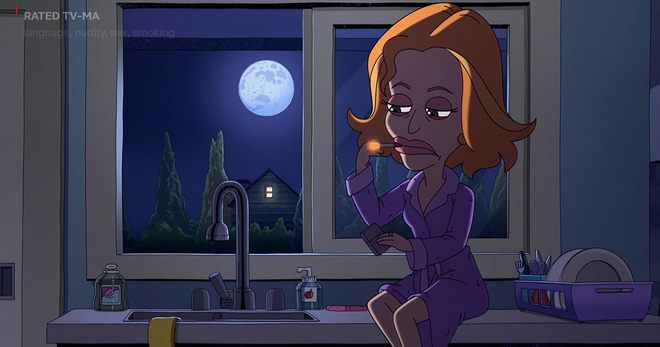Smoke screens: Is tobacco use in youth-rated movies still a problem?
It’s been nearly 40 years since the tobacco industry paid to put tobacco products in the mouths of characters in popular youth movies, such as “The Muppet Movie” (1979) and “Who Framed Roger Rabbit” (1988). Although paid tobacco product placement has since been banned, tobacco use in youth-rated movies continues. How far have we come with protecting kids from on-screen smoking?
A new report from the U.S. Centers for Disease Control and Prevention analyzes smoking in top-grossing movies to examine where progress has been made and where youth are still at risk. Tobacco use on screen is a public health concern because, as the U.S. Surgeon General reported in 2012, exposure to smoking imagery in movies can cause young people to start smoking. In fact, youth who are heavily exposed to on-screen smoking imagery are approximately two to three times as likely to begin smoking, compared to youth who are lightly exposed.
Information in the CDC report comes from the University of California, San Francisco and Breathe California which, since 2002, have collected and analyzed data on tobacco incidents (images of actual or implied tobacco use in each scene) in top-grossing movies, including those with youth ratings G, PG and PG-13. Here’s what they found.
Uneven progress
Last year’s crop of top-grossing movies rated PG and PG-13 contained fewer movies with smoking than any year since 2002. Overall, 1 in 4 youth-rated films featured smoking, a 61 percent decline since 2002. Although that decline is good news, the number of tobacco incidents creeped back up in 2016 from a historic low of less than 600 in 2010. In 2016, there were over 800 incidents.
“Although there were fewer top-grossing movies depicting tobacco use in 2016 compared with 2010, an increase in the number of such incidents occurred, thereby concentrating exposure to tobacco use in fewer films,” the report states. Its authors conclude that if the rate of change before 2010 had continued, “all youth-rated movies would have been entirely smoke-free by 2015.”
Protecting youth
The report highlights the need for a measure that many public health experts have long advocated: an R rating for any movie with tobacco use, “unless the portrayal is of actual historical figures who smoked, a documentary or if the portrayal includes the negative effects of tobacco use.”
If all films with smoking were rated R, teen smoking rates would decline 18 percent, according to a 2014 Surgeon General report. That same year, the CDC determined that giving an R rating to movies with tobacco content would prevent 1 million tobacco deaths among children and teens alive today.
The report suggests that other measures could help protect youth in addition to an R rating, including disqualifying productions featuring tobacco use from receiving public subsidies such as tax credits.
Combatting cultural norms
Addressing images of smoking in movies through measures that reduce youth exposure is important because tobacco in any form of entertainment contributes to the perceived normalization of smoking behaviors.
For example, smoking imagery is prevalent in video games, including many teen-rated games. A report released by Truth Initiative®, “Played: Smoking and Video Games,” found that smoking is prevalent and often glamorized in video games played by youth, and video game content descriptors often fail to mention tobacco use, making it difficult for parents to monitor games for tobacco imagery. Additionally, the expansion of the media landscape into screening platforms has created more opportunities for tobacco exposure.
These cultural norms are of particular concern because, while we have seen dramatic declines in the teen smoking rate, now at 6 percent, we have not seen the same rate of decline among young adults. Nearly all smokers—99 percent—begin using tobacco before age 27.
More in tobacco in pop culture
Want support quitting? Join EX Program
By clicking JOIN, you agree to the Terms, Text Message Terms and Privacy Policy.
Msg&Data rates may apply; msgs are automated.



